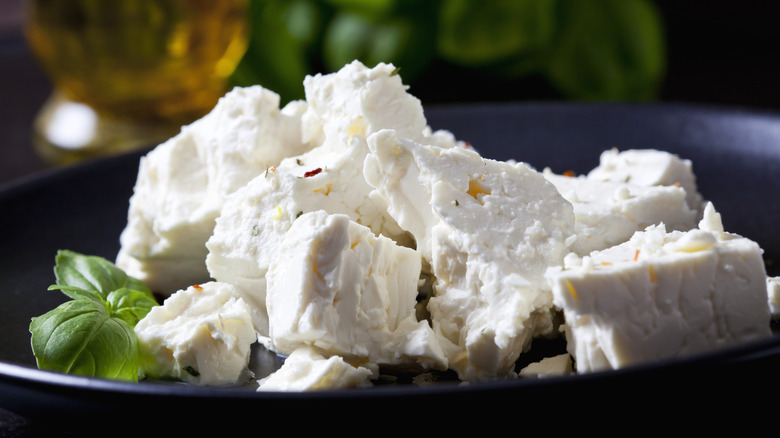
Consult any nutritionist or cheese enthusiast, and they’ll easily list reasons why consuming cottage cheese is beneficial, especially when compared to other cheeses. It all boils down to its nutritional profile: a 100-gram serving of full-fat cottage cheese includes 11.6 grams of protein, 154 milligrams of phosphorus, 9.2 milligrams of magnesium, and 88 milligrams of calcium. It’s also fairly low in fat (4.22 milligrams) and sodium (350 milligrams), with just over 100 calories.
Nevertheless, there’s a slightly lesser-known (but equally delicious) Greek cheese that surpasses cottage cheese, gram for gram, in terms of essential nutrients: feta cheese. This soft, white cheese, made from sheep or goat milk, contains 14.2 grams of protein, 337 milligrams of phosphorus, 19 milligrams of magnesium, and an impressive 493 milligrams of calcium (more than five times the amount in cottage cheese) per 100-gram serving.
The health benefits of consuming feta cheese

Considering its nutritional makeup, it’s no wonder that feta is among the healthiest cheeses available. Every health enthusiast understands that protein is vital for various bodily functions, notably muscle development and recovery. Working in conjunction with calcium and phosphorus, protein also supports strong bone development, with the latter two nutrients being crucial for bone density, composition, and osteoporosis prevention.
Moreover, adding feta cheese to your diet may promote a healthier gut. According to a 2006 study in the International Dairy Journal, Lactobacillus plantarum, a probiotic found in feta cheese, has been observed to enhance the body’s immune response against harmful pathogens like Salmonella and E. coli, while also improving overall gut health.
Another component of feta cheese with disease-preventing potential is a fatty acid known as conjugated linoleic acid (CLA). This compound has been reported to help combat cancer, diabetes, and atherosclerosis (plaque buildup in the arteries). Additionally, CLA may aid in reducing body fat while increasing lean body mass, as noted in a 2004 article in the Journal of the American Dietetic Association.
The best ways to enjoy feta cheese

That being said, excessive consumption of feta cheese can pose health risks, so moderation is key.
Feta cheese contains nearly three times the sodium found in cottage cheese, with a staggering 1,140 milligrams per 100-gram serving. It also has more than five times the fat content, at 21.5 grams. The high sodium content in feta cheese results from the brining process used in its production. Fortunately, rinsing feta before consumption can help reduce sodium levels. Additionally, individuals who are lactose intolerant should be cautious, as feta and other unripened cheeses can be high in lactose. Lastly, with 265 calories per 100-gram serving, feta has more than twice the calories of cottage cheese.
The key is consuming feta cheese in moderation. Discovering creative ways to incorporate feta cheese into your diet can be beneficial; luckily, it’s as versatile as it is nutritious. You can spread it on bread, add cubes to your salad, serve it with fruits on a charcuterie board, use it as a topping for pizza, tacos, or pasta, and even experiment with recipes like tofu feta or spinach and feta omelette.




